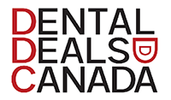Empower Your Patients Through Effective Communication
As dental professionals, effectively communicating oral health recommendations to your patients is essential for ensuring their understanding and compliance. The foundation of successful communication lies in building a strong rapport with your patients. By actively listening to their concerns and creating an open environment, you foster trust and encourage patients to ask questions.
To ensure clarity, avoid using dental jargon or technical terms that might confuse patients. Instead, explain recommendations using simple, everyday language that resonates with them. Visual aids, such as diagrams, images, and videos, can significantly enhance your explanations. These visual representations help patients grasp complex concepts like proper brushing techniques or the progression of gum disease more easily.
Personalization is key. Tailor your recommendations to each patient's unique needs and oral health goals. When patients can see how the recommendations align with their aspirations and address their concerns, they are more likely to engage with the advice you provide.
Encourage a two-way dialogue during appointments. Invite questions and actively listen to your patients' doubts, fears, and expectations. This approach not only empowers patients but also fosters a collaborative partnership in managing their oral health.
Prioritizing key points is crucial. Highlight the most important recommendations that require immediate attention. This prevents overwhelming patients with excessive information and allows them to focus on the essential aspects of their oral care routine.
Offer written materials summarizing your recommendations. These materials can include care instructions, dos and don'ts, and follow-up plans. Equipping patients with written references enables them to reinforce their knowledge at home.
Physically demonstrate proper techniques like brushing or flossing. Patients often benefit from seeing correct methods in action, enhancing their understanding and confidence in executing these techniques correctly.
Emphasize the benefits of following your recommendations. Clearly communicate how adhering to the advice contributes to preventing cavities, maintaining fresh breath, or achieving an improved smile. Patients are more likely to comply when they understand the positive outcomes they stand to gain.
Address any hesitations or objections a patient might have toward a recommendation. Take the time to listen attentively and provide evidence-based explanations to alleviate any doubts they might harbor.
Outline a long-term plan for your patient's oral health journey. Breaking down the path into manageable steps and showcasing how each recommendation plays a role in their overall well-being helps patients stay motivated and engaged.
During subsequent visits, review the patient's progress in adhering to recommendations. Acknowledge their efforts and offer additional guidance if needed. This not only reinforces your commitment to their oral health but also demonstrates your investment in their progress.
Leverage digital tools like educational apps, interactive websites, or email newsletters to supplement your in-person recommendations. Providing ongoing educational resources helps patients stay informed and engaged beyond their appointments.
Be culturally sensitive in your approach. Respect and consider cultural differences that might influence a patient's perception of oral health practices. Tailoring your recommendations to accommodate their cultural beliefs and practices demonstrates your respect for their background.
Encourage patients to take ownership of their oral health. Stress that following recommendations is a partnership, with both you as the dentist and them as the patient working together toward achieving optimal oral health.
By implementing these strategies, you can enhance patient understanding and compliance with oral health recommendations. Effective communication not only improves patient outcomes but also establishes trust and loyalty, contributing to a successful and thriving dental practice.

